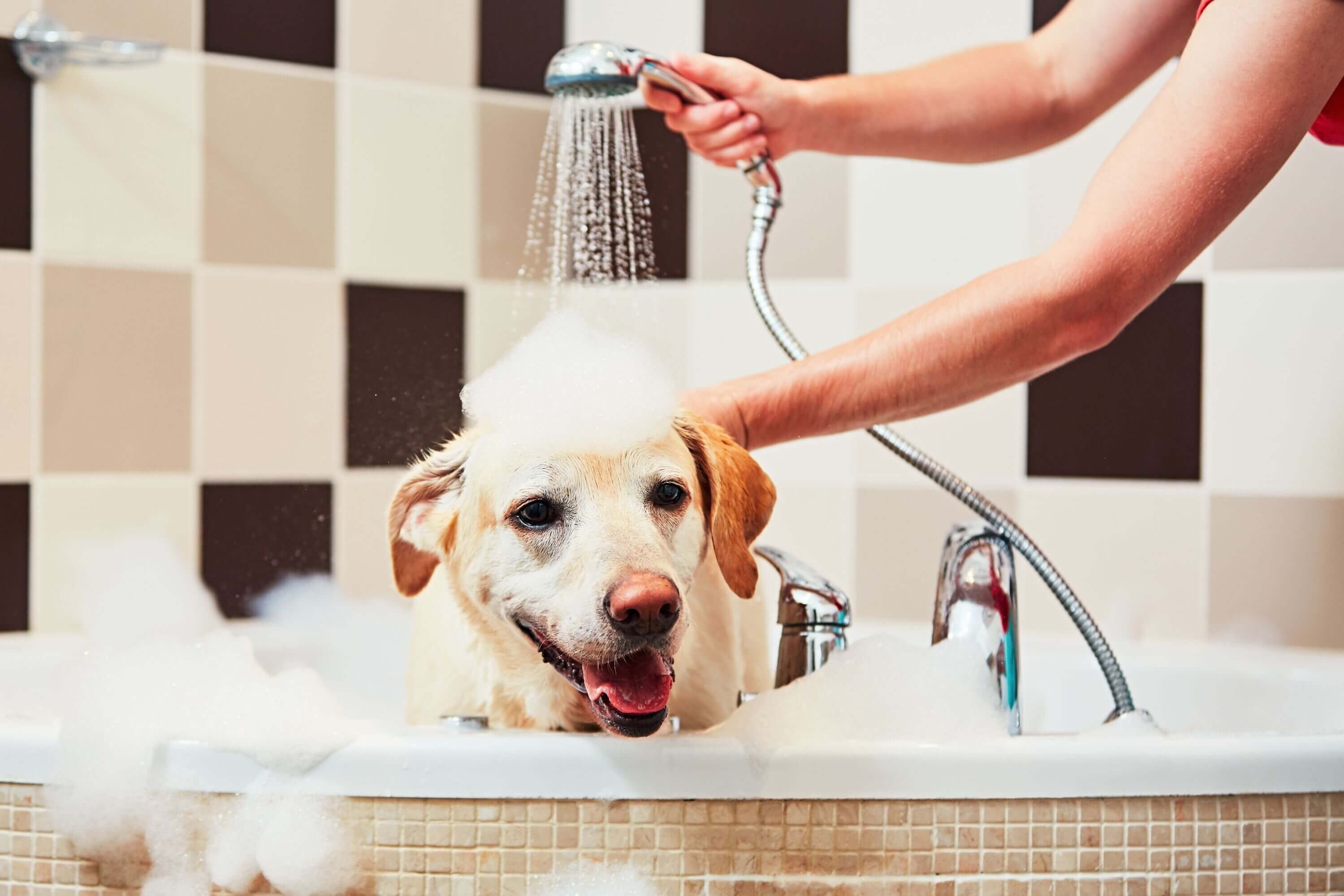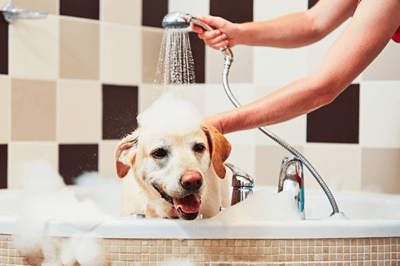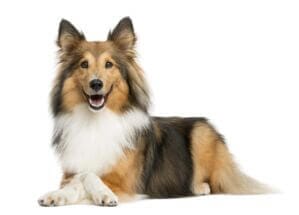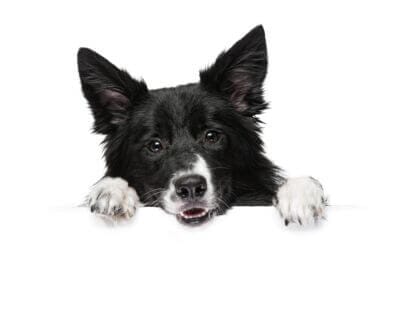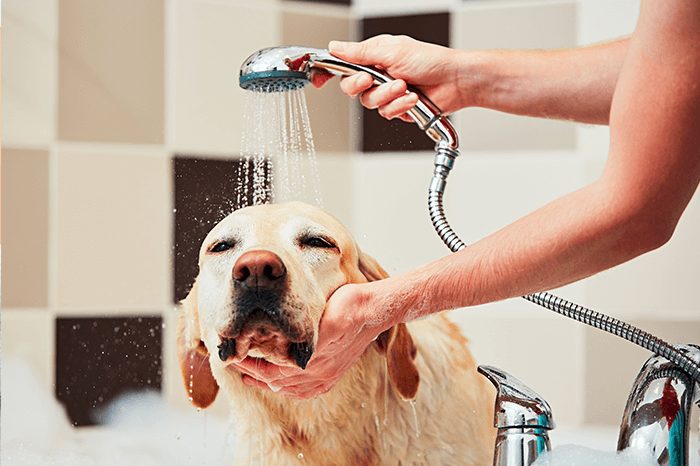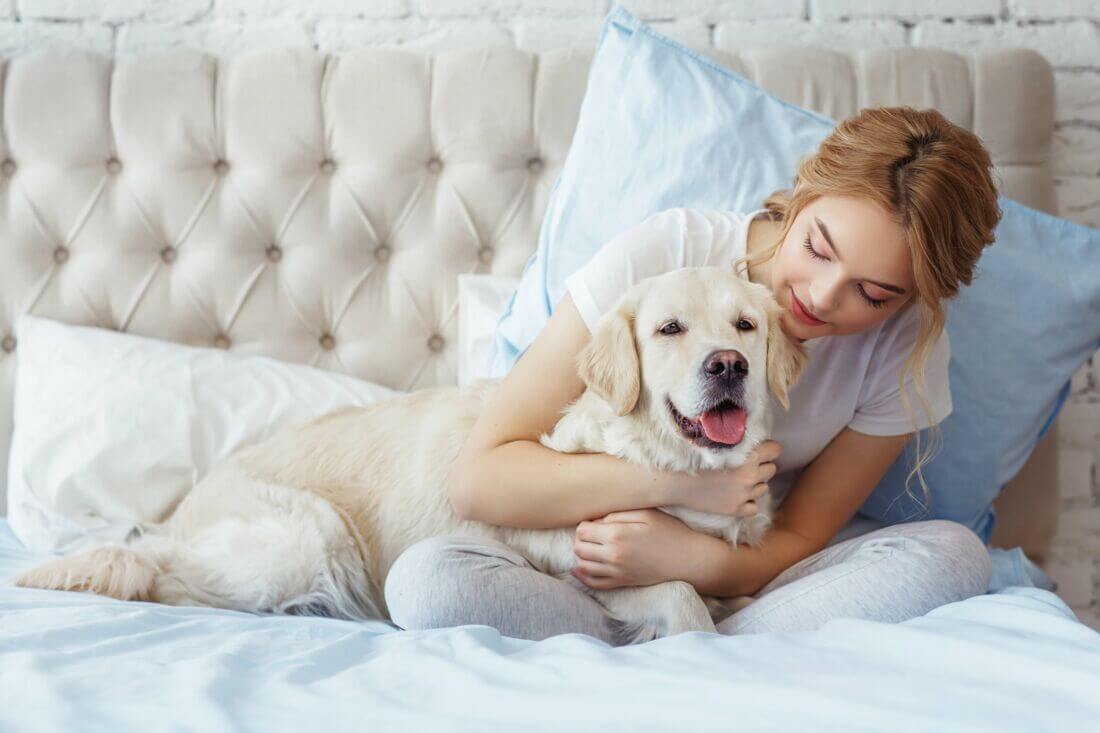Bathing your dog
Marina G VeterinarianThere is no rule regarding bathing routine for dogs in terms of frequency and method. Each dog will require a tailored routine depending on their coat but also family lifestyle notably.
Like many factors when it comes to dog ownership, dog bathing is not a one-size-fits-all approach. Whilst it is essential for grooming and hygiene purposes, not all dogs will have the same requirement when it comes to the frequency and method of bathing. This will be dependent on several factors, including breed and the type of coat your dog has, the environment around them, their lifestyle and activity, and any underlying skin or health conditions.
How often should your dog be bathed?
The recommended frequency of bathing has a wide range of variability, anywhere from weekly to once every three months. Some factors that influence how often a dog needs to be bathed include:
- Breed, coat and skin type – breeds with short coats may not need bathing all that often, whereas breeds with longer hair or double coats may need more frequent baths due to trapped dirt and grime.
- Lifestyle – an adventurous dog that’s out and about getting muddy will need more frequent baths than a dog that prefers to enjoy its home comforts!
- Health conditions – dogs with skin conditions may be medically required to have more frequent baths, such as the DOUXO® S3 product line which are specially formulated to not dry out their skin and fur.
- Age and owner preferences – puppies often require more regular bathing than adult dogs simply due to exploring the world/toilet training. Another factor to consider is owner inclination – for dogs spending a lot of time lounging on beds and sofas, more frequent bathing may be preferable.
How do I make bath time positive for my dog?
One of the most important steps to consider when bathing your dog is to make the experience as positive as possible for them. The last thing that we as owners want is to wage a battle with our dog when bath time comes around. A positive bath time is good for everybody and will make the process so much easier. So how do we do this?
Positive reinforcement
Ideally starting as soon as you get a puppy, rewarding their good behaviour during bath-time with lots of treats and praise is a good place to start. Besides, your dog is influenced enormously on your own energy and body language, so the more relaxed you are, the more relaxed your dog will be. Treat and reward it as play, and your dog is much more likely to see it as something to enjoy, rather than something to run away from, leaving a trail of muddy soapy suds behind them.
Ensure they are well-exercised first
If bathing your dog does prove to be a little bit of a battle, then taking them for a nice walk to remove some pent-up energy will be a good first step.
Don’t rush the process
Let your puppy or dog explore the bath. Allow them to become curious about it. Give them treats as they get used to the sound of running water, then perhaps try putting them in the water on another day. Rather than forcing them to sit in the bath, rigid and fearful, it’s much better in the long run to implement the smaller steps over a period of time. Though it may take longer and doesn’t provide us the instant gratification of a clean dog immediately, you will reap your dog’s lifetime of benefits (and save time in the long run).
Ensure the floor isn’t slippery
Sometimes a dog’s hatred for something can come down to their sensory experience, so ensuring that they feel comfortable is important. Also, if you are bathing your dog in the tub and not outside in the garden (climate will determine this), then slipping can cause injury, especially whilst they are growing. Cushioning the floor with a non-slip bathmat or towel is such a simple step that can make a huge difference to their enjoyment of bath time.
Be mindful about water temperature and pressure
Ensuring optimal comfort will pave the way to a more positive bath experience for your pooch. You want the water to be a comfortable temperature for them (lukewarm, ideally), and make sure that the pressure is not too harsh for their body.
How to bathe a dog?
- Brush coat and ensure there are no knots or matts
- Consider the best location for your dog. Whether they are bathed outside, in the sink or in a bathtub will largely depend on climate and the size of your dog. Ensure the floor isn’t slippery.
- Make sure that you are prepared. Having everything you need right there at your fingertips will prevent any last-minute excursions into cupboards to find them, and prevent a wet slippery dog running around the room.
- Ensure your dog is completely wetted down before applying shampoo. When applying shampoo, make sure you are able to get a good lather all over them, and don’t overlook places like the armpits, paw-pads and bellies. Massage the shampoo into their skin really well before rinsing it off. In case of medicated shampoo, your vet may have recommended to apply first on damaged areas and a stand-time for the ingredient to penetrate.
- Avoid eyes and ears. Washing the face is better done with wipes or a damp cloth. If your dog has skin folds (such as the Boxer or Bulldog) ensuring you get into the depths of these folds is important to prevent skin inflammation.
- Ensure that the water runs clean after the rinse. Any shampoo that remains on the skin may act as an irritant and dry the skin out. Be patient with this process and rinse a few times from neck to tail.
How to dry my dog properly?
There are a few options for letting your dog dry after their bath time.
Let them hair dry
If your dog has short hair, allowing them to dry naturally can be appropriate, especially if they have sensitive skin. A few shakes and happy zoomies later, and your dog may be comfortable enough to air dry without any intervention. However, it is not likely to be appropriate in dogs with long or thick double coats, especially in humid environments, as it can promote skin infections or lead to matting of the fur.
Towel dry
A tried-and-true method, towel drying will remove the extra moisture. It is best to get a dog towel that will draw out more water than your regular bath towels. Towel drying may not be appropriate in dogs with long hair that is prone to tangling.
Blow dryers
There are dog-specific blow dryers that groomers will use to speed up the drying process and make sure your dog is nice and fluffy by the time you come to pick them up. Using our own human hairdryers is not recommended with the heat settings, as it can be far too high for dog’s skin. If you use your hairdryer, please make sure to use it on a low heat. There are several different types on the market, such as cage dryers, force dryers and stand dryers.
Blow dryers that are designed for dogs are very versatile and customisable, and will promote a better and safer experience for them. Ensuring that you introduce them slowly to your dog to get them used to it is incredibly important, as the sound and force of the air can frighten them.
